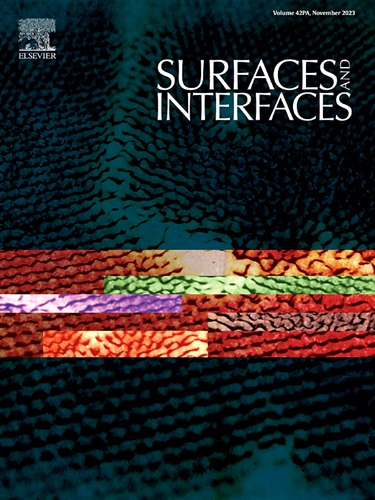Unravelling surface traps dominated direct-current surface charging and discharging mechanisms
IF 6.3
2区 材料科学
Q2 CHEMISTRY, PHYSICAL
引用次数: 0
Abstract
Surface traps on a material have a significant influence on charge transport, further determining charging and discharging of an insulator surface. Here, the parameters of surface traps on epoxy composites are tailored through a variety of surface modification methods, and relationships are established between the surface discharge voltage (Vf) and the surface trap depth (Et) over a wide Et range. It is found that the Et dependence of Vf can be divided into three regions, namely, leakage-current, shallow-trap-dominated, and deep-trap-dominated regions. Numerical analysis reveals that in the leakage-current region, a large surface current degrades the solid material and triggers surface discharge. In the shallow-trap-dominated region, the surface charge dissipation rate exceeds the injection rate, surface charge accumulates and the tangential electric field is distorted as Et increases, and so Vf decreases with increasing Et. In the deep-trap-dominated region, charge injection and migration are impeded, causing surface charge to accumulate only near electrodes, the distortion of the central tangential electric field is reduced, and Vf increases with increasing Et. This work provide a comprehensive understanding of surface trap effects in DC surface charging and discharging, and they should prove useful for further dielectric theory, surface modification techniques, and advanced functional devices.

展开表面陷阱主导了直流表面充放电机制
材料的表面阱对电荷传输有重大影响,进一步决定了绝缘体表面的充放电。本文通过多种表面改性方法对环氧树脂复合材料的表面陷阱参数进行了定制,并在较宽的 Et 范围内建立了表面放电电压(Vf)和表面陷阱深度(Et)之间的关系。研究发现,Vf 与 Et 的关系可分为三个区域,即泄漏电流区、浅阱主导区和深阱主导区。数值分析表明,在泄漏电流区域,较大的表面电流会使固体材料变质并引发表面放电。在浅陷阱主导区,表面电荷耗散率超过注入率,表面电荷积累,切向电场随 Et 的增加而扭曲,因此 Vf 随 Et 的增加而减小。在深阱主导区,电荷注入和迁移受阻,导致表面电荷只在电极附近积累,中心切向电场的畸变减小,Vf 随 Et 的增大而增大。这项研究全面了解了直流表面充放电中的表面陷阱效应,对进一步的介电理论、表面改性技术和先进的功能器件应该很有帮助。
本文章由计算机程序翻译,如有差异,请以英文原文为准。
求助全文
约1分钟内获得全文
求助全文
来源期刊

Surfaces and Interfaces
Chemistry-General Chemistry
CiteScore
8.50
自引率
6.50%
发文量
753
审稿时长
35 days
期刊介绍:
The aim of the journal is to provide a respectful outlet for ''sound science'' papers in all research areas on surfaces and interfaces. We define sound science papers as papers that describe new and well-executed research, but that do not necessarily provide brand new insights or are merely a description of research results.
Surfaces and Interfaces publishes research papers in all fields of surface science which may not always find the right home on first submission to our Elsevier sister journals (Applied Surface, Surface and Coatings Technology, Thin Solid Films)
 求助内容:
求助内容: 应助结果提醒方式:
应助结果提醒方式:


